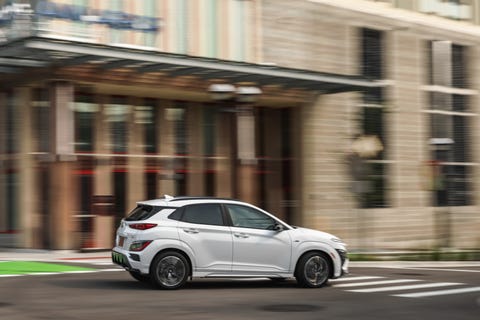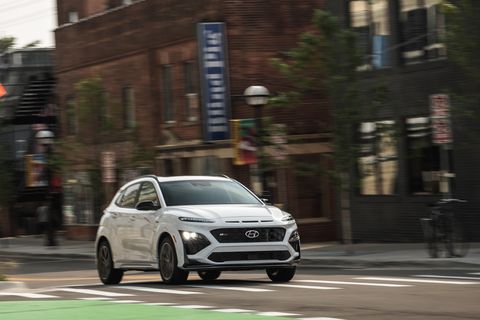The 2022 Hyundai Kona is out with beautiful features and an upgrade that one would love to cruise with. The subcompact Kona is, simply put, a great package that blends carlike on-road behavior with bold styling, a dose of practicality, and an elevated driving position. Two four-cylinder engines are offered: a 2.0-liter four, which is admittedly pretty poky, and a more desirable turbocharged 1.6-liter four that delivers a lot more pun
The 2022 Hyundai Kona is a subcompact SUV that offers a lot for its accessible price. For the 2022 model year, the Kona receives its first major makeover since its 2018 debut. From the outside, it’s sharper and sleeker than its predecessors, and a new N Line trim adds a distinctly sporty look. The interior changes are more subtle, with a reworked center stack (where the dashboard meets the center console) and new materials and ambient lighting.
For 2022, a larger 8-inch touchscreen comes standard as does wireless connectivity for Apple CarPlay and Android Auto smartphone integration. Other technology upgrades for the new model year include an available digital instrument panel and a larger 10.25-inch infotainment screen and additional connectivity features for the Hyundai Blue Link system. Advanced safety and driver assistant features have also been updated, with the most notable being adaptive cruise control that can bring the Kona to a complete stop, lane keeping assist and rear automatic braking.
Sticking to Hyundai’s value-forward approach, the Kona comes with a long list of standard features which only grows as you move through the more expensive trims—the top few of which get downright posh. The 2022 Hyundai Kona is one of the smaller offerings in the subcompact SUV segment, so it gives up cargo and passenger space to some of its larger rivals, but we think the trade-off for the Hyundai’s compact package and fun-to-drive nature more than makes up for those shortcomings.
Engine, Transmission, and Performance
Two powertrains are available with the 2022 Hyundai Kona: SE and SEL models come with a 147-hp four-cylinder and a six-speed automatic transmission. This setup could use a bit of caffeine; in our testing, an all-wheel-drive SEL model required 9.2 seconds to reach 60 mph. Limited and N-Line models are powered by the considerably peppier 195-hp turbocharged four-cylinder paired to a seven-speed dual-clutch automatic. The seven-speed dual-clutch automatic shifts quickly and smoothly once you’re rolling, but it stumbles at low speed in parking lots and in bumper-to-bumper traffic, engaging and disengaging first gear hesitantly until the driver offers more throttle input. The Kona delivers agile handling and a surprising amount of fun. This doesn’t translate to a rough ride over choppy roads; in fact, the suspension offers quite the opposite, damping out bumps and providing occupants with a cabin that is well isolated from pavement imperfections. The steering is perhaps the Kona’s biggest dynamic downfall: It’s an uncommunicative helm that, despite its heavy-weighted feel, requires frequent corrections when cruising the highway.




